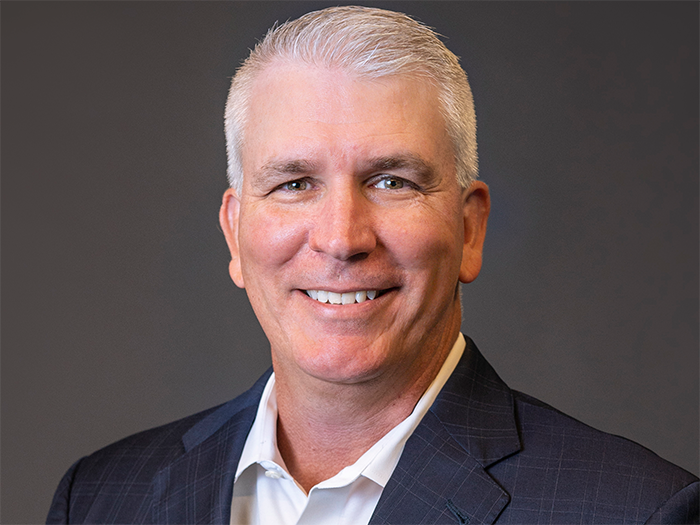Sponsored Content by The Hartford
Collaboration at the Crossroads of Safety and Technology

Rapid-fire advancements in technology can leave many business sectors with whiplash trying to keep up.
The construction industry, however, has largely been immune to tech disruption. The means and methods of erecting a building, bridge or any other structure have more or less remained the same over the years.
But change is on the horizon.
New technology — like building information modeling (BIM), wearables, and automated machinery — is growing more prevalent on job sites.
These modern tools promise to boost efficiency, help address the skilled labor shortage and ultimately keep workers safer. Construction remains, after all, one of the riskiest industries from a safety standpoint.
But new technology also presents new risks if not thoughtfully implemented. Project owners, contractors and workers all must understand how a piece of technology works and how it benefits every stakeholder for it to be effective.
To harness the promise of construction technology while minimizing its downsides, contractors and their insurers should adopt a collaborative approach to understand how new tools fit into a project’s workflow, which encompasses everything from production processes and schedules to safety and risk management programs.
“Technology is changing the construction industry,” said Tom Boudreau, vice president of construction insurance for The Hartford. “Without strong collaboration and understanding of a common goal, safety and a good work product can’t be accomplished.”
Technology Promise and Perils

Dennis Gardner, risk engineering director, The Hartford
Compared to traditional paper blueprints, BIM models provide a more detailed, interactive and 3D view of a project. Digitizing the plans has given way to more innovative building methods.
“With 3D BIM technology, we’re seeing much more off-site prefabrication being done in manufacturing warehouse environments,” said Dennis Gardner, risk engineering director, The Hartford. “This can reduce risk because much of the work is done at ground level, eliminating the need to put workers on ladders or in lifts.”
But getting pre-fabricated modules on-site creates unique challenges.
Pre-fabricated units that include interior designs should not be exposed to weather, which makes transporting, delivering and storing them risky. Collaboration is paramount to using these models effectively.
“In the past if your schedule was off by a day or two, there was typically a storage area for raw materials. But with a finished product that really should not be exposed to the elements, you have to be ready for when that unit arrives on site,” Boudreau said. “That requires a high level of coordination between the manufacturer and workers on site to keep schedules in sync.”
Wearables and GPS trackers similarly provide big safety benefits when workers and managers are on the same page.
A superintendent or foreman could, for example, apply geofencing to keep workers out of high hazard areas like elevated platforms if their work does not require them to be there. If a worker crosses the boundary, an alert may be sent directly to their wearable device, or to a safety manager on site. GPS tracking can also alert a manager to a worker’s location if they have fallen or otherwise injured themselves.
To some workers, though, wearing a tracking device can feel like Big Brother is watching, waiting to pin them for violating a safety protocol.
“Collaboration and communication is key to help contractors and laborers understand that the purpose of the technology is not to catch them doing something wrong, but to help them work safer and more efficiently,” Gardner said.
Automated and remote-controlled machinery can also improve safety by keeping workers away from high risk areas and activities.
“Semi-automated masonry machines can build a masonry wall semi-automatically with only minimal actual worker interface, reducing the risk of injury from material handling strains and injuries from falls,” Gardner said.
“Years ago if you were drilling in a quarry or on a construction project with a rock drill, the operator was standing right at the drill head operating the controls that applied the pressure, the rotational spin and the water control. Now that can be done remotely to eliminate the exposure to loud noise, the material handling of the heavy drill steel, and of course the exposure to silica.”
But any new machinery presents risks if handled improperly. The lack of labor skilled in operating new, high tech equipment — combined with inadequate training — exacerbate these risks.
Labor and Training Shortage

Tom Boudreau, vice president of construction insurance for The Hartford
“The economic downturn really diminished the training resources offered by vocational schools and unions, which leads to less trained folks coming onto a job site. That’s a dangerous situation from a safety perspective and also from a product perspective,” Boudreau said.
Younger workers also tend to learn differently, utilizing technology where their veteran counterparts relied more on gaining hands-on experience in the field. Older workers, perhaps feeling threatened by the new technology or newer and younger workers coming onto the scene, are at times resistant to help train them.
“We have been disappointed, in some cases, with the lack of willingness of some of the older generation to teach the new generation necessary skills,” Boudreau said. But where technology widens the divide between the young and the experienced, it can also provide a new training avenue.
“Some of the wearables show some promise in that they can remotely connect a less experienced person in the field with a more seasoned worker, who can help to troubleshoot whatever issue the trainee is encountering.” Gardner said. “In some cases, the wearable device can provide a live view of the situation at hand.”
GPS units, BIM models, and digitally automated equipment may also provide data on workflow processes and safety vulnerabilities. Gaining additional insight into these areas will likely prove critical as construction timetables further compress and the labor shortage persists.
“We have to shift to a proactive safety approach. We have to think about what risks we’ll face weeks or months ahead in the schedule.” — Dennis Gardner, risk engineering director, The Hartford
A Collaborative Approach
Leveraging what technology has to offer — from safer work sites to better data and increased efficiency —calls for collaboration on the job site.
This is where The Hartford’s dedicated construction risk engineering consultants take a leading role.
“We have to move from a traditional inspector role into more of a consultative role,” Gardner said. “We want to understand the dynamics of a company, their safety programs, and how they’re using automated tools or connected technology.”
Inspectors typically only spot point-in-time problems while they’re walking a job site. They don’t necessarily have insight into systemic issues that lead to safety shortfalls, or hazards the company may face in future phases of construction.
“Traditional inspection approaches are reactive and punitive. We have to shift to a proactive safety approach. We have to think about what risks we’ll face weeks or months ahead in the schedule,” Gardner said.
To help accomplish this proactive approach, The Hartford’s risk engineering consultants meet with contractors before a project even begins to identify phases of construction or periods in the schedule where risk may be highest. They discuss ahead of time what will be done to mitigate the risk, including evaluating the safety program. They can help project managers implement things like wearables if there is a desire to use them.
“The use of technology, especially the newer technology that’s been developed in the last decade, is eventually going to lead to much safer job sites,” Boudreau said. “But it all starts with a collaborative approach.”
For more on The Hartford’s construction offerings, visit https://www.thehartford.com/construction.
![]()
This article was produced by the R&I Brand Studio, a unit of the advertising department of Risk & Insurance, in collaboration with The Hartford. The editorial staff of Risk & Insurance had no role in its preparation.










